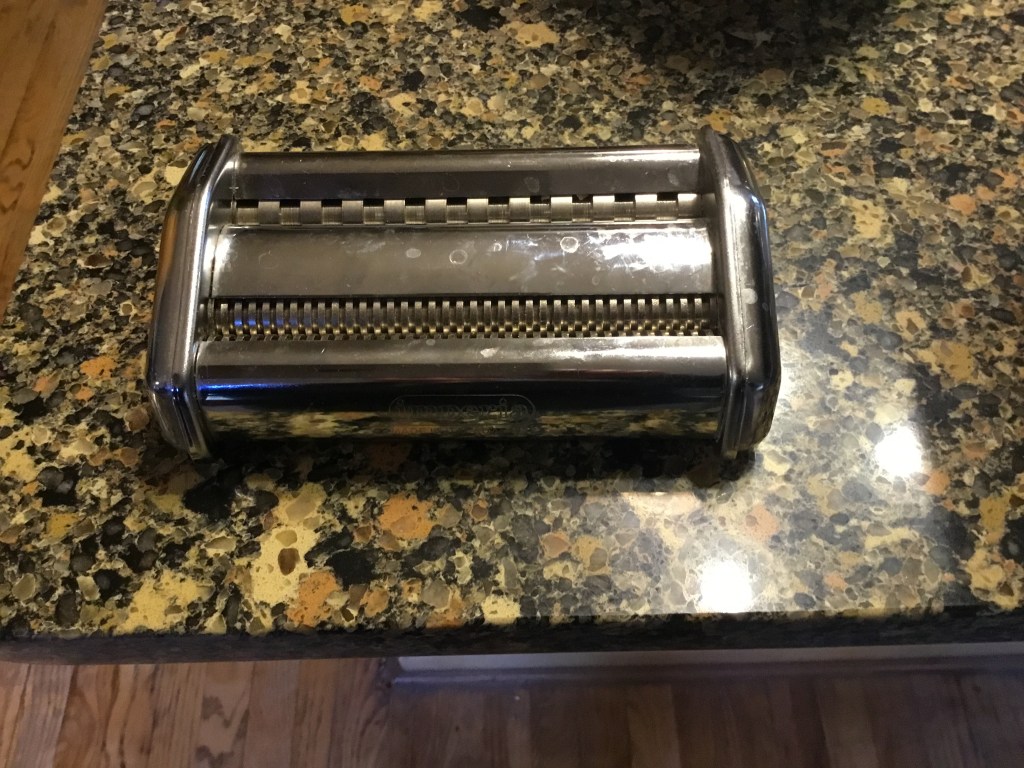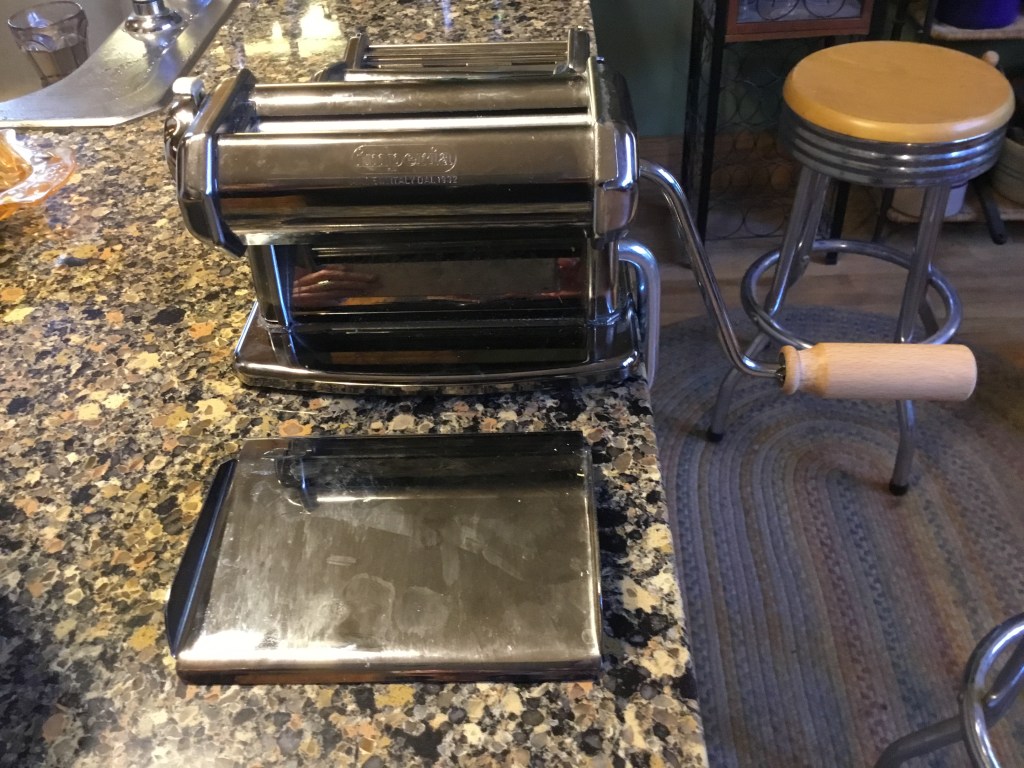
Thomas Jefferson loved pasta. He and his chef James Hemings are said to have introduced macs and cheese–or at very least, popularized it– to North America, and for years he and his family imported pounds and pounds of pasta every year from Italy. Undoubtedly, the first American recipe for macs and cheese was in one of his relative’s cookbooks, Mary Randolph’s 1824 book, The Virginia Housewife.
Jefferson also owned a pasta machine, which was purchased in Naples. His description of it is as follows:
The best maccaroni in Italy is made with a particular sort of flour called Semola, in Naples: but in almost every shop a different sort of flour is commonly used; for, provided the flour be of a good quality, and not ground extremely fine, it will always do very well. A paste is made with flour, water and less yeast than is used for making bread. This paste is then put, by little at a time, viz. about 5. or 6. lb. each time into a round iron box ABC, the under part of which is perforated with holes, through which the paste, when pressed by the screw DEF, comes out, and forms the Maccaroni g.g.g. which, when sufficiently long, are cut and spread to dry. The screw is turned by a lever inserted into the hole K, of which there are 4. or 6. It is evident that on turning the screw one way, the cylindrical part F. which fits the iron box or mortar perfectly well, must press upon the paste and must force it out of the holes. LLM. is a strong wooden frame, properly fastened to the wall, floor and cieling of the room.
N.O. is a figure, on a larger scale, of some of the holes in the iron plate, where all the black is solid, and the rest open. The real plate has a great many holes, and is screwed to the box or mortar: or rather there is a set of plates which may be changed at will, with holes of different shapes and sizes for the different sorts of Maccaroni.
Papers of Thomas Jefferson
So even back in the day there were machines for making pasta, and the Greeks said that the god Hephaestus/Vulcan himself made the first one. I’ll stick with this Italian made Imperia machine.

The double cutters are particularly handy, and this one makes both spaghetti and linguini. A large number of single cutters are available also.

This cutter makes pappardelle, a nice thick pasta for equally thick sauces. The machine itself can make sheet pasta in six different thicknesses.

The machine did not come with an instruction manual (naturally), so I had to jimmy with it to see the options. The dough tray clips to the front, which is the side the sheet pasta comes out of. The front will also hold a single cutter. The back side works best with the double cutter. Or, you could just leave all that stuff off, and make sheet pasta at the thinnest setting, or even dumplings, at the thickest setting.

Bill Buford wrote that the Italian introduction of the egg into pasta making was their greatest contribution. I nominate this machine for second place.
